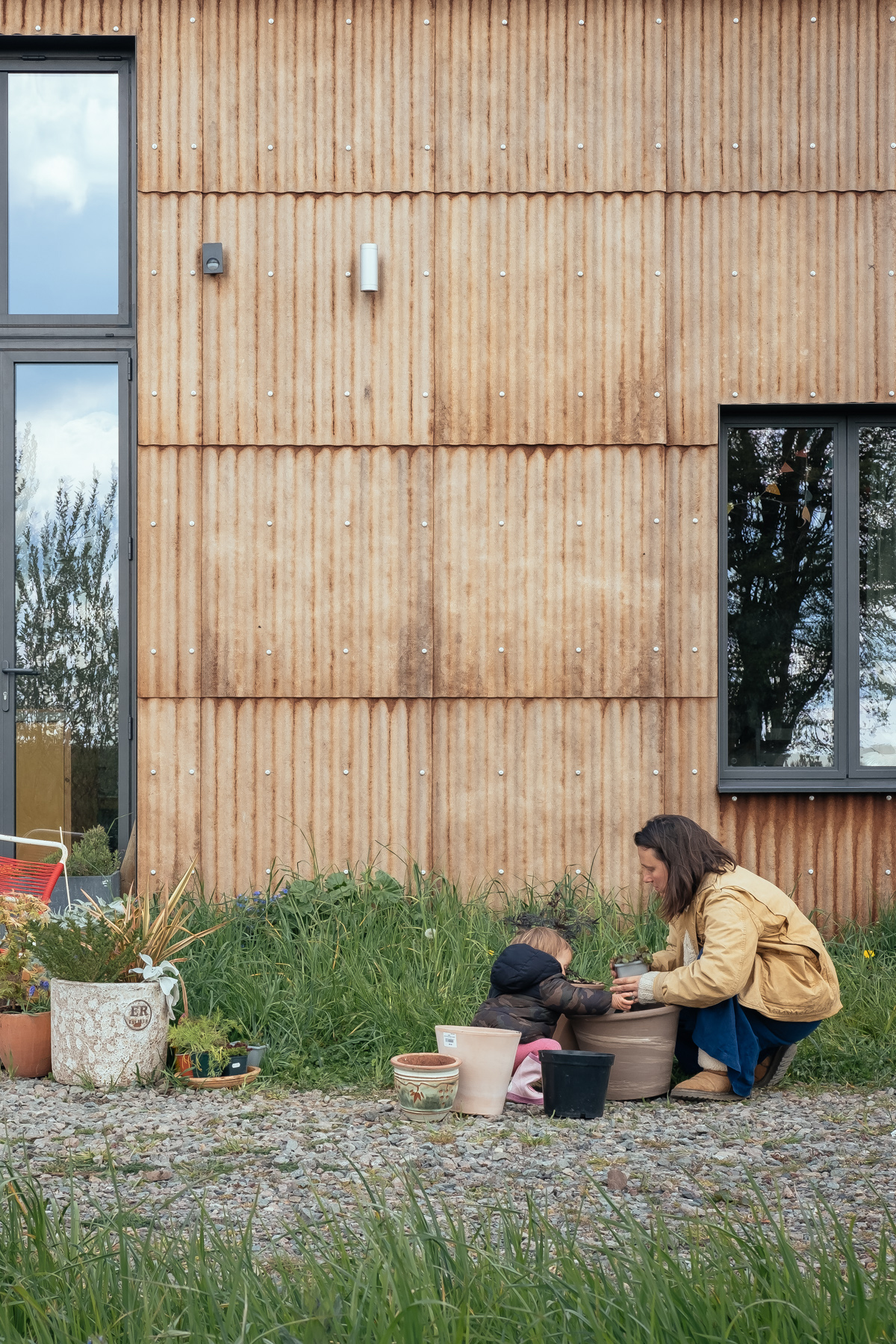The house that hemp made: Steve Barron on his off-grid, carbon-capturing house at Margent Farm

Our new film invites you into the farmhouse film director Steve Barron has built at his Margent Farm in Cambridgeshire using hemp grown in the surrounding fields. Discover how Steve and Practice Architecture’s mission to confront issues concerning plastic waste, soil degradation, carbon emissions and human wellbeing saw them harness hemp as a low-impact, carbon-capturing material for the 21st century. Watch the film here.


Steve’s career as a filmmaker has encompassed highlights such as directing ‘Billie Jean’ for Michael Jackson and ‘Take On Me’ for a-ha, as well as feature films like the 1990 Teenage Mutant Ninja Turtles. More recently, however, Steve took over 50 acres of farmland with the initial intention to “try and contribute something for our world, our planet.”
That contribution turned out to be organic hemp farming, a crop which requires special permission to grow, but one which, as Paloma Gormley, head of Practice Architecture, explained to the Architects’ Journal, “is fast-growing and better than commercial forestry at sequestering carbon – and its long tap roots help to regenerate the soil.” Not only that, but “Beyond the relatively light processing and transportation emissions, the materials can be understood to be carbon-neutral (or carbon-negative if you count the sequestration), which is a vast improvement on steel, concrete, or petrol-based insulations.”



With the first hemp seeds planted on the farm in May 2017, a design that would best utilise the resulting material was drawn up. The resulting scheme, encompassing the footprint of an existing barn, comprises a series of spaces that range in scale from a self-heating, open-plan glass room to intimate bedrooms and living spaces. The ultimate beauty of the house is that its construction reflects the material it is made from: the woody ‘core’ of the hemp plant was used to make ‘hempcrete’ for the exposed interior structure, while the plant’s exterior fibre was developed, with the help of Cambridge University, into a new corrugated cladding material.


“I didn’t want to build a big, expansive house,” says Steve, explaining his desire not to have to heat a large area for a small number of people. But while it may be relatively modest in physical scale, Flat House – as the project was named – is big in other ways, for its scope could extend far beyond Margent Farm. A method of construction that deploys a carbon-sequestering natural material which can be returned to the soil eventually; that factors in solar, wind and biofuel as energy sources, and which can be built efficiently off-site, is being proposed by Practice Architecture’s research arm, Material Cultures, as a model for sustainable building across many scales of building. And Steve has already made available the corrugated hemp panels, and other hemp oil and fibre products.
To discover more about Steve’s farm, house and the principles behind them, watch the film here. Don’t forget to subscribe to our YouTube channel to never miss an update.
Film & Photographs by Jim Stephenson & Edward Bishop





















